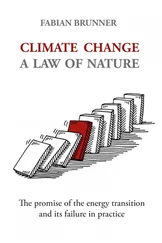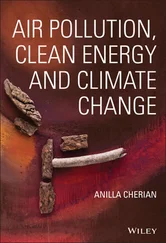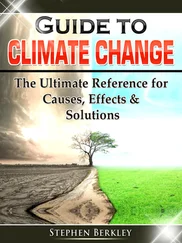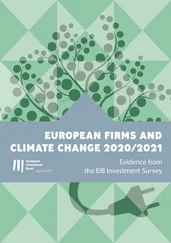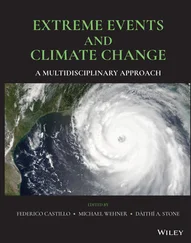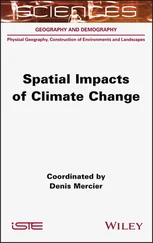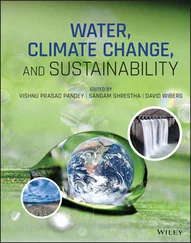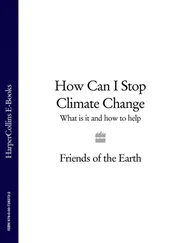Scientists project that the worst is yet to come. The IPCC models anticipate that about half of the farmland in South America could become more desert-like or suffer saltwater intrusions. If sea levels continue to rise at a rate of 0.08 to 0.12 inches (2 to 3 millimeters) per year, it could affect drinking water on the west coast of Costa Rica, shoreline tourism in Mexico, and mangroves in Brazil.
The threat to the Amazonian rainforest from logging and burning has attracted the concern of celebrities such as Sting and Leonardo DiCaprio. But human-caused global warming could potentially do more damage than loggers. By mid-century, the IPCC predicts that parts of the Amazon could change from wet forest to dry grassland, and that reduction in rainfall during dry months will reduce agricultural yields. Recent scientific reports confirm even a 2 degree C temperature increase could wipe out the Amazon. (We cover how ecosystems will be affected by climate change in Chapter 8.)
Recent findings have shown that climate change is already well under way in Europe. Years ago, the IPCC projected the changes that the continent is experiencing today: rising temperatures, devastating floods, increased intensity and frequency of heat waves, and increased glacier melt.
As for what’s in store for Europe, the IPCC reports a 99-percent chance that Europe will experience other unfavorable climate changes. Changes experienced so far include the following:
More flash floods and loss of life in inland areas: In 2021, floods in Germany and Belgium killed more than 200 people and caused billions in damage — experts agree that such previously called “once in 400-year” floods are much more likely because of climate change.
More heat waves, forest fires and droughts in central, eastern, and southern Europe: These events significantly impacted health and tourism in southern Europe in particular. The worst year on record for forest fires was 2019, until 2021 burned 1.2 million acres (half a million hectares). Much of the forest burned was in southern Europe, but fires are having increasing effects in the north as well.
Rising sea levels, which will increase erosion: These rising sea levels, coupled with storm surges, will also cause coastal flooding. The Netherlands and Venice are experiencing greater impacts than other areas in Europe dealing with the rising sea level. Venice, a 1,600-year-old Italian city that is one of the world’s greatest heritage sites, is built on log piles (which are gradually sinking) among canals, and so is particularly vulnerable to climate change. Rising sea levels are increasing the frequency of high tides that inundate the city.A report published by the U.S. National Academy of Science says that loss of up to 50 percent of Europe’s native species of plants and animals may be likely if climate change isn’t arrested. Fisheries will also be stressed.
These impacts are all serious, but none of them represents the worst-case scenario — the Gulf Stream stalling. The results of this (stopping of a major ocean current) would be disastrous for Europe. (We look at the Gulf Stream Ocean current issue in Chapter 7.)
On a per-person basis, Africans have contributed the very least to global warming because of overall low levels of industrial development. Just look at a composite photo of the planet at night: The United States, southern Canada, and Europe are lit up like Christmas trees, burning energy that results in GHG emissions. Africa, on the other hand, shows very few lights: some offshore oil rigs twinkle, and a few cities shine, but the continent is mostly dark.
Despite contributing very little to the source of the problem, many countries in Africa are already experiencing effects of global warming. East Africa Hazards Watch says
“Major cities in East Africa have witnessed an increase in temperatures that almost doubles the 1.1 degrees C warming that the globe has experienced since pre-industrial times. Since 1860 Addis Ababa (Ethiopia) has warmed by 2.2 degrees C, Khartoum (Sudan) by 2.09 degrees C, Dar es Salaam (Tanzania) by 1.9 degrees C, Mogadishu (Somalia) by 1.9 degrees C, and Nairobi (Kenya) by 1.9 degrees C.”
Global warming is expected to melt most of Africa’s glaciers within the next few decades, which will reduce the already critically low amount of water available for farming. Long periods of drought followed by deluge rainfall have had devastating impacts in places such as Mozambique. Coastal areas in East Africa have suffered damage from storm surges and rising sea levels. The World Bank projects that by 2050 86 million people could be displaced by climate-related changes.
 Unfortunately, because of pervasive poverty and the historic scourge of HIV/AIDS and now of COVID, many areas of Africa lack the necessary resources to help people living there cope with climate change. And the effects of global warming may act as a barrier to development and aggravate existing problems. At present, as many as 400 million (or 33 percent of the continent’s population) lack drinkable water, according to the World Resources Institute. The IPCC projects that some countries could see a 50-percent drop in crop yields over the same period and a 90-percent drop in revenue from farming by the year 2100. (We look at how developing nations are affected by and are addressing global warming in Chapter 12.)
Unfortunately, because of pervasive poverty and the historic scourge of HIV/AIDS and now of COVID, many areas of Africa lack the necessary resources to help people living there cope with climate change. And the effects of global warming may act as a barrier to development and aggravate existing problems. At present, as many as 400 million (or 33 percent of the continent’s population) lack drinkable water, according to the World Resources Institute. The IPCC projects that some countries could see a 50-percent drop in crop yields over the same period and a 90-percent drop in revenue from farming by the year 2100. (We look at how developing nations are affected by and are addressing global warming in Chapter 12.)
More people call Asia home than any other continent — 4.7 billion in all. This high population, combined with the fact that most of Asia’s countries are developing, means that a lot of people won’t be able to sufficiently adapt to climate change impacts. As in Africa, climate change will bring pressures to the continent that will slow down development.
Here are some impending concerns for many parts of the continent:
Future availability of drinkable water: This has been and continues to be a major problem because of population growth, pollution, and low or no sanitation. The IPCC projects that anywhere from 120 million to 1.2 billion people may find themselves without enough drinkable water within the next 42 years, depending on the severity of climate change. Already, rising temperatures are causing glaciers in the Himalayas to melt. These disappearing glaciers, which are the water supply to 2 billion people, are also contributing to increased avalanches and flooding.
Rising sea levels for coastal Asia: The IPCC reports that mangroves, coral reefs, and wetlands will be harmed by higher sea levels and warming water temperatures. Unfortunately, this slightly salty water won’t be good for freshwater organisms, as a whole. (See Chapter 8for more about the impact global warming will have on the oceans.)
Illnesses: They’re also expected to rise because of global warming. Warmer seawater temperatures could also mean more, and more intense, cases of cholera. Scientists project that people in South and Southeast Asia will experience more cases of diarrheal disease, which can be fatal. ( Chapter 9offers more information about how global warming might increase the environmental conditions that promote the spread of diseases.)
Australia and New Zealand
If you ask an Australian or a Kiwi about global warming, you probably won’t get any argument about its negative effects. According to the World Wildlife Fund (WWF), Australia has experienced increased extreme and deadly bush fires, heat waves, less snow, and changes in rainfall. Extreme drought conditions persisted from 2003 to 2012 and from 2017 to today. This heat and lack of precipitation will likely worsen while global warming’s effects intensify.
Читать дальше
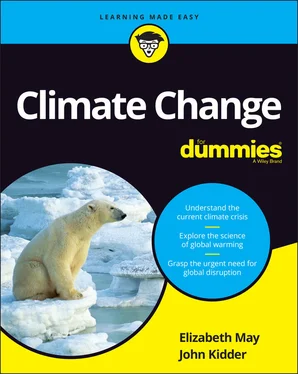
 Unfortunately, because of pervasive poverty and the historic scourge of HIV/AIDS and now of COVID, many areas of Africa lack the necessary resources to help people living there cope with climate change. And the effects of global warming may act as a barrier to development and aggravate existing problems. At present, as many as 400 million (or 33 percent of the continent’s population) lack drinkable water, according to the World Resources Institute. The IPCC projects that some countries could see a 50-percent drop in crop yields over the same period and a 90-percent drop in revenue from farming by the year 2100. (We look at how developing nations are affected by and are addressing global warming in Chapter 12.)
Unfortunately, because of pervasive poverty and the historic scourge of HIV/AIDS and now of COVID, many areas of Africa lack the necessary resources to help people living there cope with climate change. And the effects of global warming may act as a barrier to development and aggravate existing problems. At present, as many as 400 million (or 33 percent of the continent’s population) lack drinkable water, according to the World Resources Institute. The IPCC projects that some countries could see a 50-percent drop in crop yields over the same period and a 90-percent drop in revenue from farming by the year 2100. (We look at how developing nations are affected by and are addressing global warming in Chapter 12.)